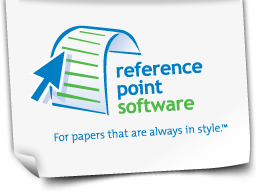Mind Mapping: How It Can Help You Write a Better College Paper
Writing college papers can feel like a mind-numbing experience at times, whether youΓÇÖre a senior scribe or a freshman writer. You will have times when you struggle to create strong points in support of your topic. Brainstorming is a common practice to help generate ideas, either on your own or with a group of other students. IΓÇÖve written about four brainstorming methods and want to focus on one of these methods that more closely resembles how your brain works called mind mapping.
Mind mapping is different from the more traditional methods of laborious note-taking and formulating of ideas from your notes. ItΓÇÖs a visual way of representing thought processes, showing new ideas, and the thinking that led to them from the original concept. It engages your brain in a way that is both fun and analytical. Mind mapping has other benefits beyond brainstorming, including note-taking, planning, researching and consolidating information from multiple sources, and gaining insights into complex subjects.
How to Draw a Mind Map
You will need some paper, a pen, and some colored pencils. ItΓÇÖs best to use the paper in landscape format. Here are four primary steps for drawing a mind map:
1. Write the title of the topic you’re exploring in the center of the page, and draw a circle around it.
2. As you come across subtopics or important facts that relate to the central topic, draw a different colored line for each that connects to the circle and radiates out from it like rays from the sun. Write a single word or simple phrase to label each line, so you keep visual clutter down to a minimum. ItΓÇÖs a good idea to print the words clearly, so as your mind map grows, it doesnΓÇÖt become difficult to read. If possible, keep the lines the same length as the word they support.
3. As you delve deeper into the subject and uncover more layers of information or ideas belonging to each subtopic, add them as lines to the subtopic line that they are associated with and in the same pencil color.
4. When you come across new information, continue to link it into the mind map appropriately. You may find that some idea or part of your diagram links to another part. You can add lines to represent the relationship visually.
In essence, a mind map is a formatting style of brainstorming that condenses the material of your paper into a concise and memorable diagram. It will have lines radiating in all directions from the central main topic. You will end up with a drawing that graphically shows your topic and sequences of ideas, clearly showing the path of how you reached them on each strand. Your mind map will resemble the branches of a tree with your subject at the center. There is no need to worry about the structure of the mind map you produce. It will evolve of its own accord as you proceed. You can incorporate codes, images, symbols, and keywords in your mind map. Use anything that clearly defines your thought processes and your ideas.
Another formatting style you need to remember as you write and edit your paper is the one assigned to you by your professor, whether MLA, APA, or another. As you take notes and incorporate ideas into your map, you must be careful to take precise notes of all your sources so you can cite them accurately. This process can often be more time consuming than the time you spend mind mapping. To help save you time and ensure you donΓÇÖt lose points for errors, consider using software products that will do the formatting for you with a couple clicks of your mouse. They will apply the correct formatting style automatically, making it even easier to write an excellent college paper and enjoy the process.
For more information about APA or MLA formats, contact us today.
David Plaut is the founder of Reference Point Software (RPS). RPS offers a complete suite of easy-to-use formatting template products featuring MLA and APA style templates, freeing up time to focus on substance while ensuring formatting accuracy. 
Reference Point Software is not associated with, endorsed by, or affiliated with the American Psychological Association (APA) or with the Modern Language Association (MLA).
